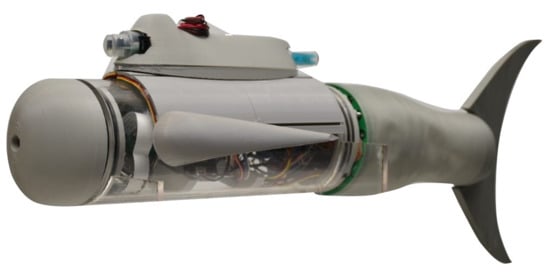Design, Construction, and Modeling of a BAUV with Propulsion System Based on a Parallel Mechanism for the Caudal Fin
Abstract
1. Introduction
2. Materials and Methods
2.1. Conceptual Design of the BAUV
2.2. Computer Design
- Nose: frontal part of the vehicle, which includes a camera to examine what is in front of the vehicle.
- Body: contains the main electronic components, supports for electronic boards, the pectoral fins, and a structure for the dorsal fin that carries the sensors system.
- Peduncle: consists of the biomimetic propulsion system carrying the caudal fin.
2.3. Prototyping
- Energy Source: Li-Polymer battery of 5000 mAh.
- Onboard computer: A card size Raspberry 3B+ was selected due to the versatility in communications, programming, and greater ease of connection to other types of plug and play devices.
- Actuators: For the propulsion system, there were three linear motion Actuonix L16-50-35-12-Ps with feedback of the position; they worked with an input voltage up to 15 VDC. The steering/tilting movements were achieved through the control of servomotors HS-5086WP for the pectoral fins.
- Sensors and signal acquisition: The sensors of the BAUV depend on the activities to be carried out. For this research, the BAUV was equipped with:
- ◦
- Inertial measurement unit: Integrates an accelerometer, gyroscope, and magnetometer. The BNO055 is a system in package (SiP), integrating the previously mentioned devices.
- ◦
- Humidity sensor: Relative humidity is the ratio of the partial pressure of water vapor to the equilibrium vapor pressure of water at a given temperature. The AM2320 sensor provides measurements of temperature and relative humidity. This sensor aims to detect water leaks in the area of the circuits to take appropriate measures and avoid damage to the vehicle.
- ◦
- PH meter: SEN0161 is an analog pH sensor with a voltage regulator and a filter at the output.
- ◦
- Turbidity sensor: the TDS-10 module measures the number of suspended particles in water.
- ◦
- Current sensor: This is used to determine the time of operation for a limited power source. A sensor AllegroTM ACS712 provides a way to sense the current for AC or DC circuits.
- ◦
- Camera: Raspberry Pi 7757731, with 5 MP resolution.
- Signal converters: ADS1115 is a precision ADC with 16 bits of resolution and 4 channels.
- Drivers: A driver controls the operation of different devices from a control signal provided by the main CPU. This device can handle different scales of current according to the requirement of the actuator.
- Communications: The type of communication used varies according to the development phase of the vehicle. First, for the testing phase, communication through WiFi and a serial interface was used for dry and water tests, respectively. The communication interfaces define the communication protocol, either TCP/IP for WiFi or asynchronous communication for serial. Later, more autonomous communications will be implemented, such as those mentioned by González et al. in [5]. Another type of communication in the vehicle was between the main CPU and the components; here, an I2C interface was implemented.
- Printed circuit boards: To integrate the different actuators and sensors, a circuit board was designed to provide connectivity and power distribution. The schematic of Figure 4 shows the interconnection between boards.
2.3.1. Instrumentation
2.3.2. Software
2.4. Propulsion System Modeling
2.4.1. Inverse Kinematics Analysis
2.4.2. Inverse Dynamics Analysis
2.4.3. Forward Dynamics Analysis
3. Simulations and Experiments
- Experiment 1: The caudal fin starts in a neutral position for a vertical fluttering to swim like a tuna. Then, the caudal fin starts to flap from −30° to +30° for a total caudal amplitude of 60° (Figure 12).
- Experiment 2: The caudal fin starts in a neutral position for a vertical fluttering and then turns 90° along the body axis, positioning it for a horizontal fluttering to swim like a dolphin. Then, the caudal fin starts to flap from −30° to +30° for a total caudal amplitude of 60° (Figure 13).
4. Conclusions and Future Work
Author Contributions
Funding
Conflicts of Interest
References
- Sahoo, A.; Dwivedy, S.K.; Robi, P.S. Advancements in the field of autonomous underwater vehicle. Ocean Eng. 2019, 181, 145–160. [Google Scholar] [CrossRef]
- Shukla, A.; Karki, H. Application of robotics in offshore oil and gas industry—A review Part II. Robot. Auton. Syst. 2016, 75, 508–524. [Google Scholar] [CrossRef]
- Moreno, H.A.; Saltarén, R.; Puglisi, L.; Carrera, I.; Cárdenas, P.; Álvarez, C. Robótica submarina: Conceptos, elementos, modelado y control. RIAI-Rev. Iberoam. Automática e Inf. Ind. 2014, 11, 3–19. [Google Scholar] [CrossRef][Green Version]
- Alam, K.; Ray, T.; Anavatti, S.G. A brief taxonomy of autonomous underwater vehicle design literature. Ocean Eng. 2014, 88, 627–630. [Google Scholar] [CrossRef]
- González-García, J.; Gómez-Espinosa, A.; Cuan-Urquizo, E.; García-Valdovinos, L.G.; Salgado-Jiménez, T.; Cabello, J.A.E. Autonomous Underwater Vehicles: Localization, Navigation, and Communication for Collaborative Missions. Appl. Sci. 2020, 10, 1256. [Google Scholar] [CrossRef]
- Kruusmaa, M.; Fiorini, P.; Megill, W.; de Vittorio, M.; Akanyeti, O.; Visentin, F.; Chambers, L.; El Daou, H.; Fiazza, M.C.; Ježov, J.; et al. FILOSE for Svenning: A Flow Sensing Bioinspired Robot. IEEE Robot. Autom. Mag. 2014, 21, 51–62. [Google Scholar] [CrossRef]
- Chowdhury, A.R.; Panda, S.K. Brain-map based carangiform swimming behaviour modeling and control in a robotic fish underwater vehicle. Int. J. Adv. Robot. Syst. 2015, 12, 52. [Google Scholar] [CrossRef]
- Sfakiotakis, M.; Lane, D.M.; Davies, J.B.C. Review of fish swimming modes for aquatic locomotion. IEEE J. Ocean. Eng. 1999, 24, 237–252. [Google Scholar] [CrossRef]
- Zhou, K.; Liu, J.; Chen, W. Numerical Study on Hydrodynamic Performance of Bionic Caudal Fin. Appl. Sci. 2016, 6, 15. [Google Scholar] [CrossRef]
- Shriyam, S.; Agrawal, A.; Behera, L.; Saxena, A. Robotic Fish Design and Control Based on Biomechanics. In Proceedings of the Third International Conference on Advances in Control and Optimization of Dynamical Systems, Kanpur, India, 13–15 March 2014; Volume 47. [Google Scholar]
- Chowdhury, A.R.; Prasad, B.; Vishwanathan, V.; Kumar, R.; Panda, S.K. Bio-Harmonized Dynamic Model of a Biology Inspired Carangiform Robotic Fish Underwater Vehicle. IFAC Proc. Vol. 2014, 47, 7258–7265. [Google Scholar] [CrossRef]
- Hu, Y.; Zhang, S.; Liang, J.; Wang, T. Development and CPG-Based Control of a Biomimetic Robotic Fish with Advanced Underwater Mobility. In Proceedings of the IEEE International Conference on Robotics and Automation (ICRA), Hong Kong, China, 31 May–7 June 2014; pp. 813–818. [Google Scholar]
- Katzschmann, R.K.; DelPreto, J.; MacCurdy, R.; Rus, D. Exploration of underwater life with an acoustically controlled soft robotic fish. Sci. Robot. 2018, 3, eaar3449. [Google Scholar] [CrossRef]
- Cavallo, E.; Michelini, R.C.; Filaretov, V.F. Conceptual design of an AUV equipped with a three degrees of freedom vectored thruster. J. Intell. Robot. Syst. Theory Appl. 2004, 39, 365–391. [Google Scholar] [CrossRef]
- Pazmiño, R.S.; Cena, C.E.G.; Arocha, C.A.; Santonja, R.A. Experiences and results from designing and developing a 6 DoF underwater parallel robot. Robot. Auton. Syst. 2011, 59, 101–112. [Google Scholar] [CrossRef]
- Wang, R.; Guo, X.; Zhong, S. An underwater vector propulsion device based on the RS+2PRS parallel mechanism and its attitude control algorithm. Appl. Sci. 2019, 9, 5210. [Google Scholar] [CrossRef]
- Raj, A.; Thakur, A. Fish-inspired robots: Design, sensing, actuation, and autonomy—A review of research. Bioinspir. Biomim. 2016, 11, 031001. [Google Scholar] [CrossRef] [PubMed]
- Yu, J.Z.; Wen, L.; Ren, Z.Y. A survey on fabrication, control, and hydrodynamic function of biomimetic robotic fish. Sci. China Technol. Sci. 2017, 60, 1365–1380. [Google Scholar] [CrossRef]
- Fossen, T.I. Handbook of Marine Craft Hydrodynamics and Motion Control, 1st ed.; John Wiley & Sons Ltd.: Trondheim, Norway, 2011. [Google Scholar]
- Masoomi, S.F.; Haunholter, A.; Merz, D.; Gutschmidt, S.; Chen, X.; Sellier, M. Design, fabrication, and swimming performance of a free-swimming tuna-mimetic robot. J. Robot. 2014, 1–7. [Google Scholar] [CrossRef]
- Leal Merlo, S.A. Design, Construction and Control of the 3-UCU, 1-S Parallel Mechanism with Spherical Motion for Forearm and Wrist Prosthetics; Instituto Tecnológico y de Estudios Superiores de Monterrey: Monterrey, NL, Mexico, 2014. [Google Scholar]
- Tsai, L.-W. Solving the Inverse Dynamics of a Stewart-Gough Manipulator by the Principle of VirtualWork. J. Mech. Des. 2000, 122, 3–9. [Google Scholar] [CrossRef]
- Khan, W.A.; Krovi, V.N.; Saha, S.K.; Angeles, J. Modular and recursive kinematics and dynamics for parallel manipulators. J. Dyn. Syst. Meas. Control 2005, 127, 529. [Google Scholar] [CrossRef]
- Khalil, W.; Guegan, S. A Novel Solution for the Dynamic Modeling of Gough-Stewart Manipulators. In Proceedings of the 2002 IEEE International Conference on Robotics and Automation (Cat. No.02CH37292), Washington, DC, USA, 11–15 May 2002; Volume 1, pp. 817–822. [Google Scholar]
- Taghirad, H.D. Parallel Robots Mechanics and Control; CRC Press: Boca Raton, FL, USA, 2013. [Google Scholar]
- Lemus, D.; Rodriguez, C.F.; Yime, E. Inverse Dynamic Explicit Formulation of a Stewart—Gough Manipulator Based on the Virtual Work Approach. In Proceedings of the 7th European Nonlinear Dynamics Conference (ENOC 2011), Rome, Italy, 24–29 July 2011. [Google Scholar]
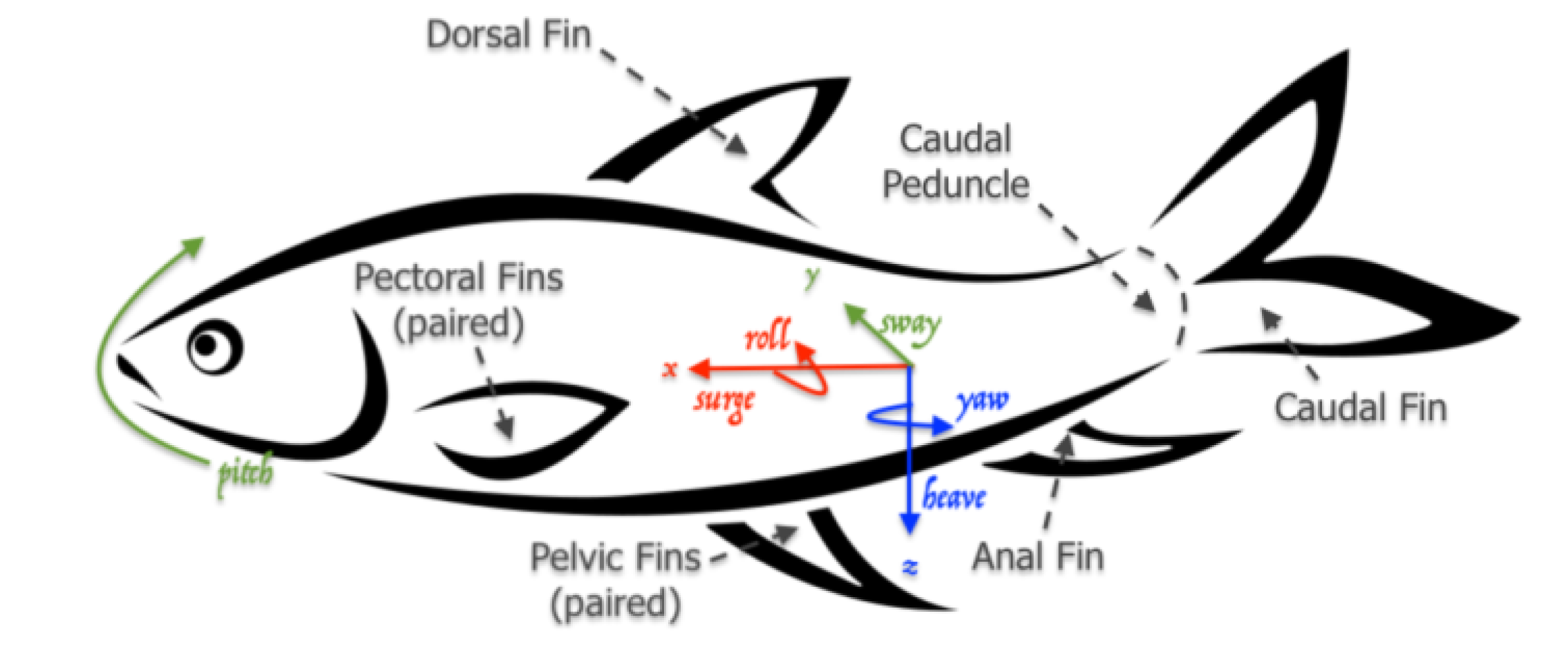
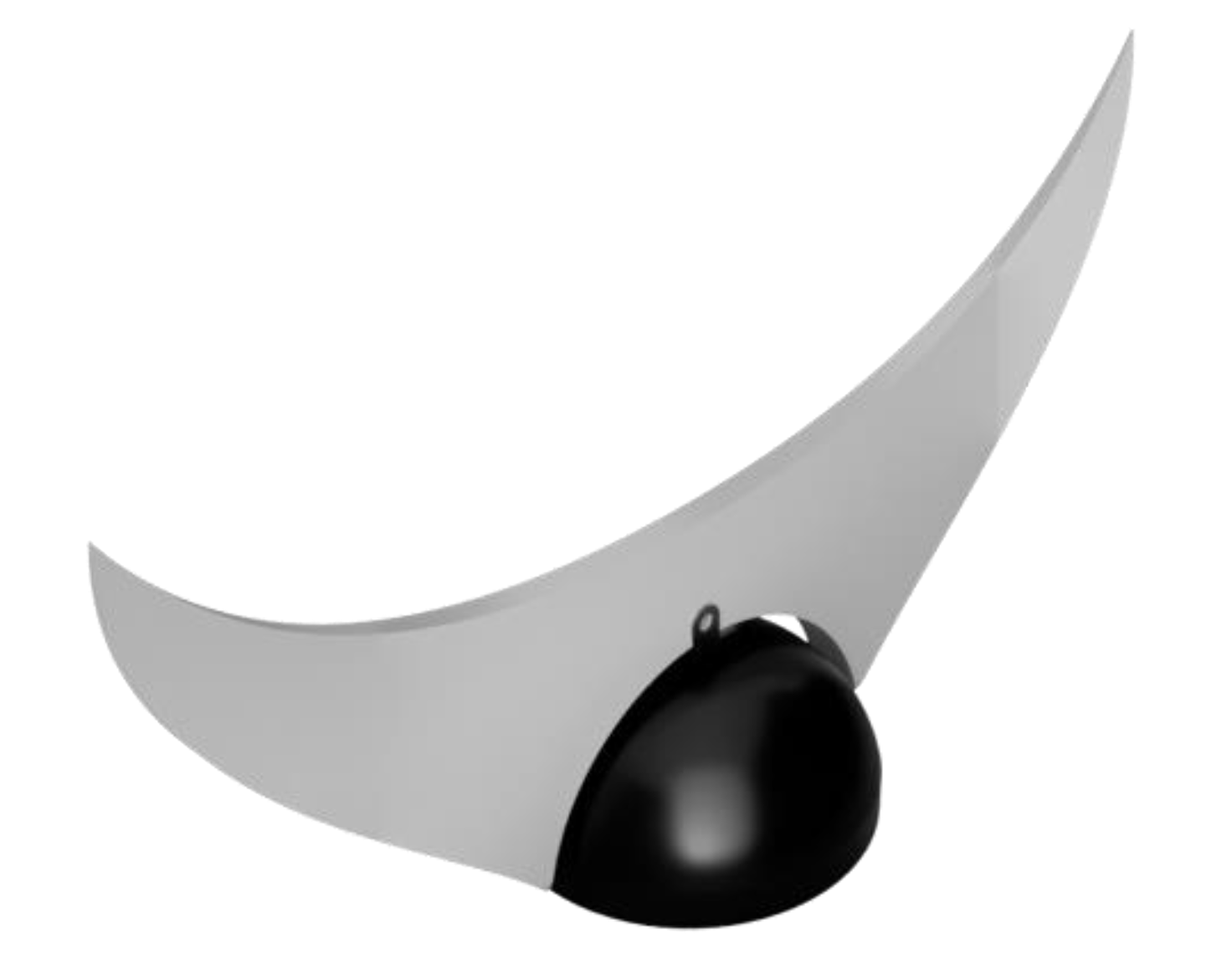
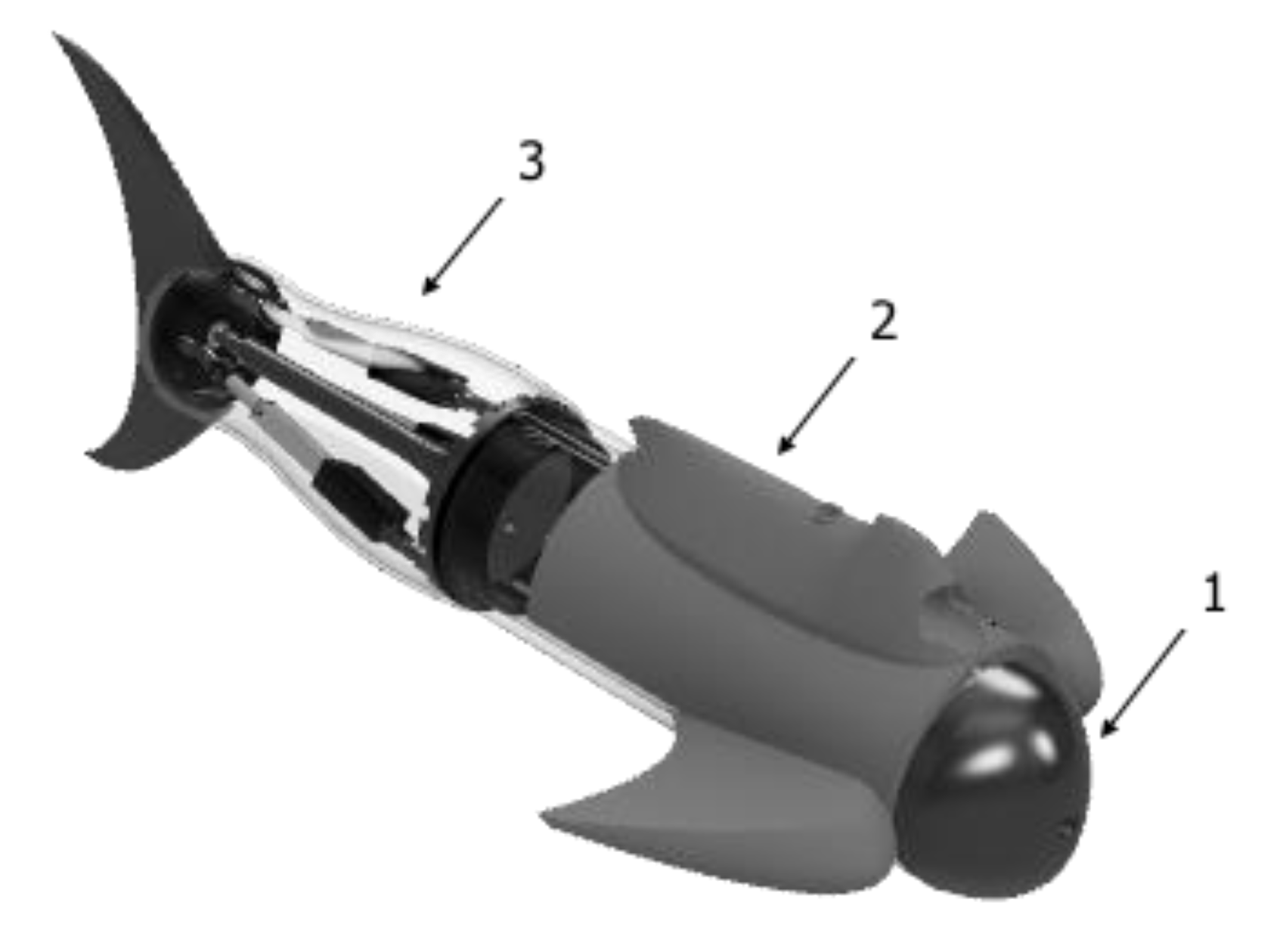
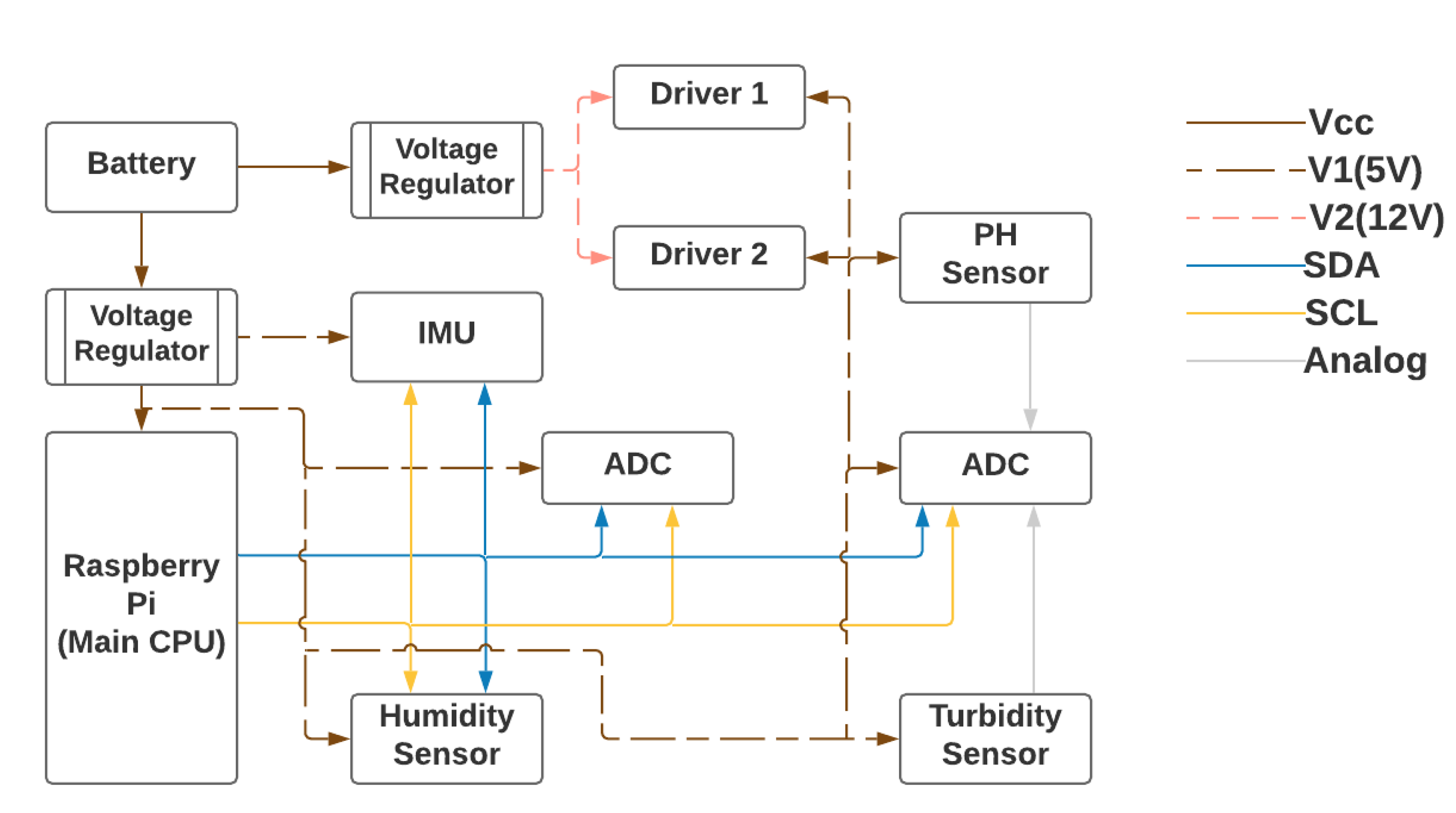
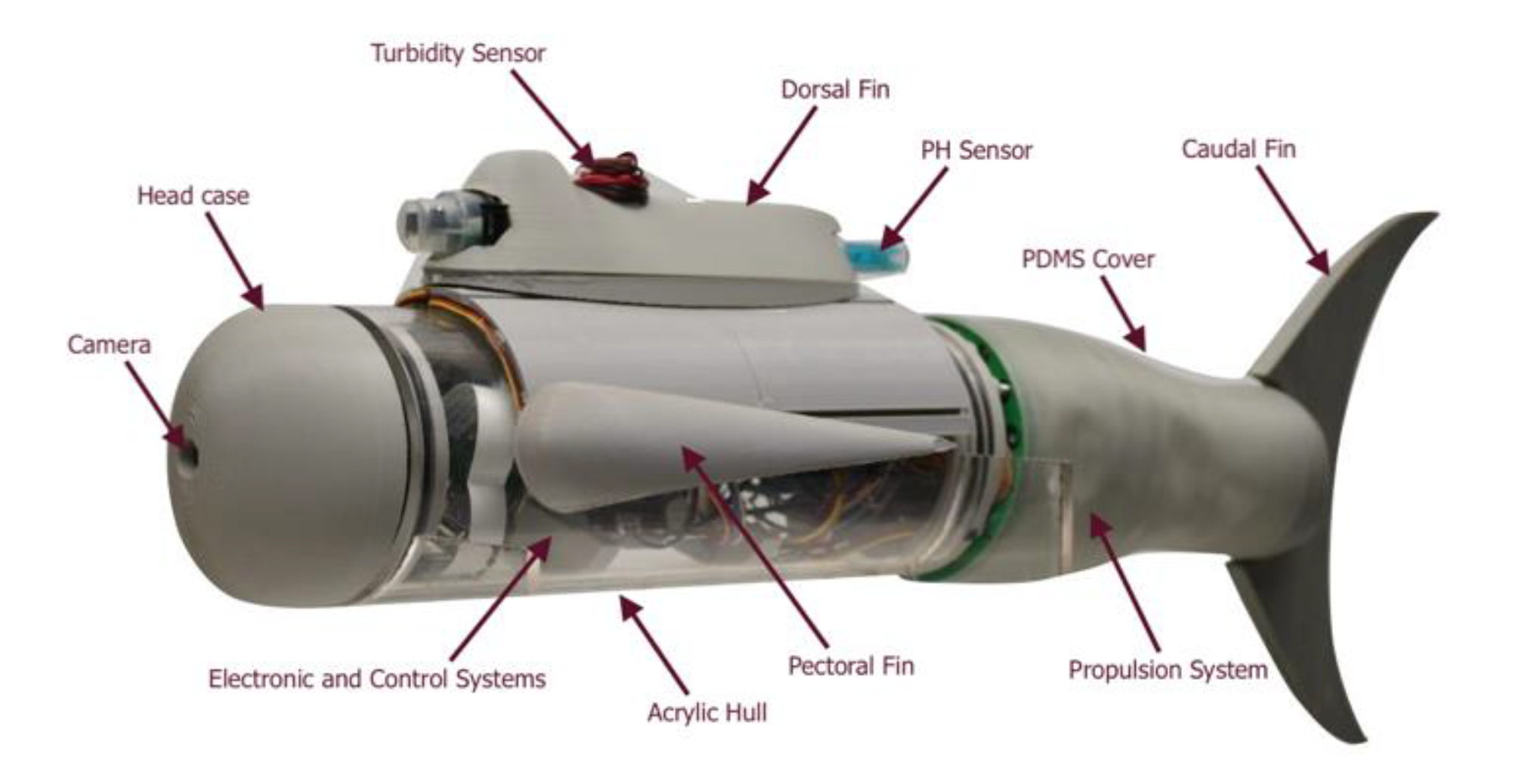
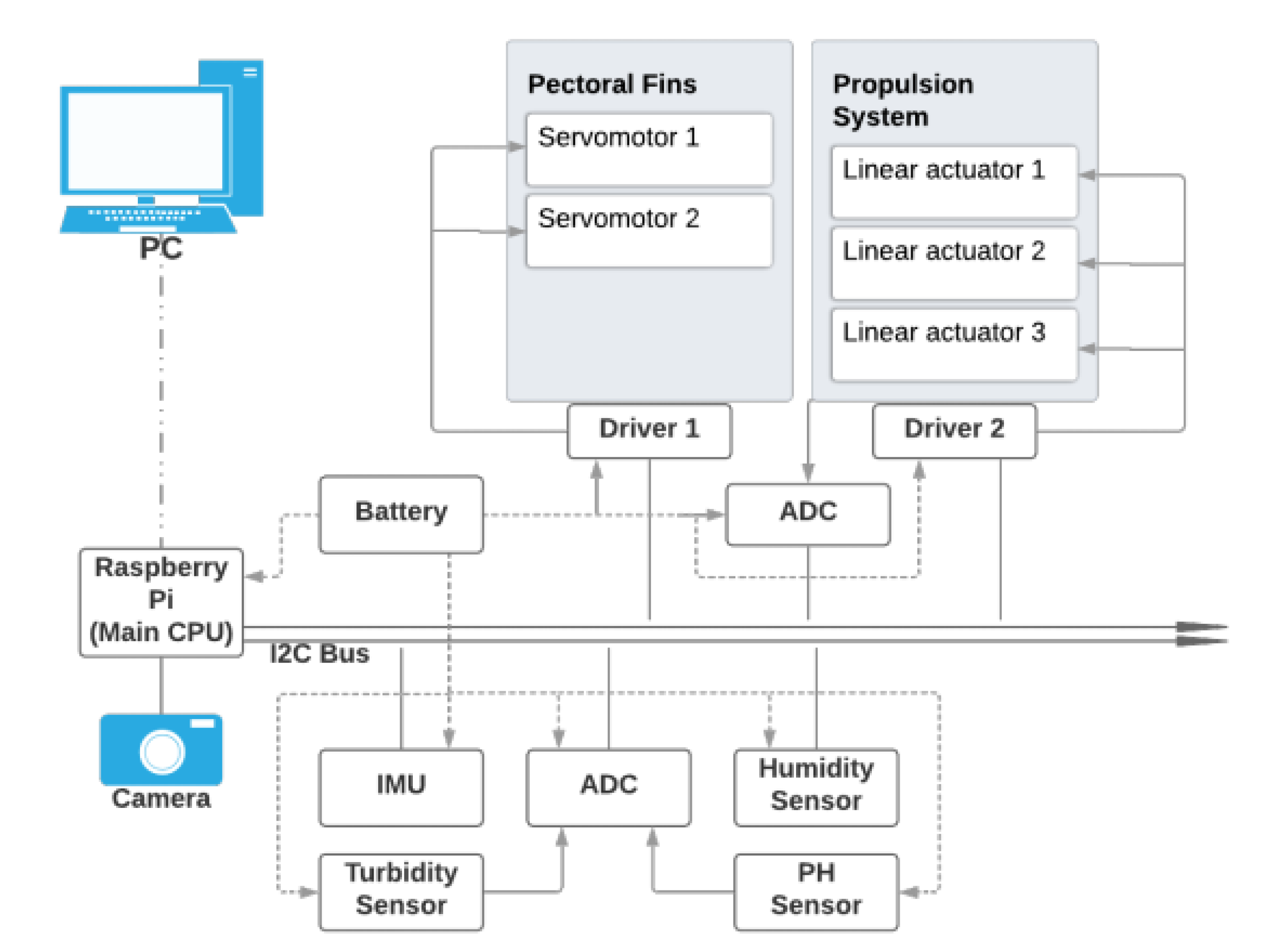

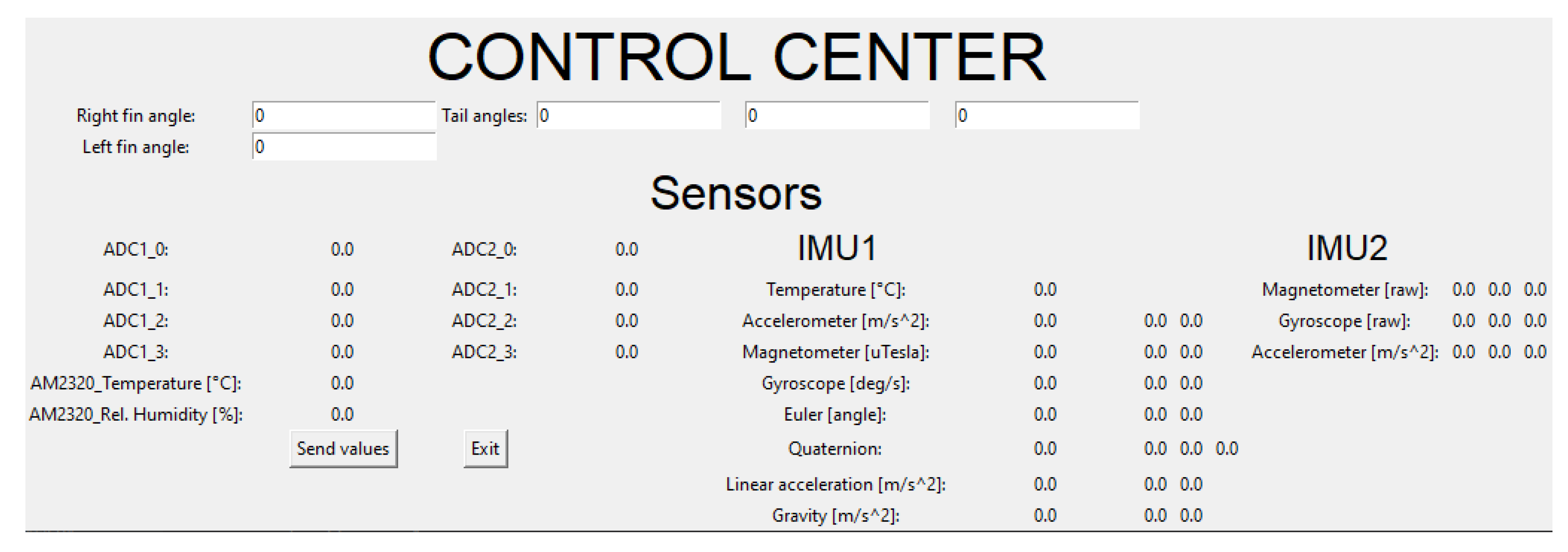

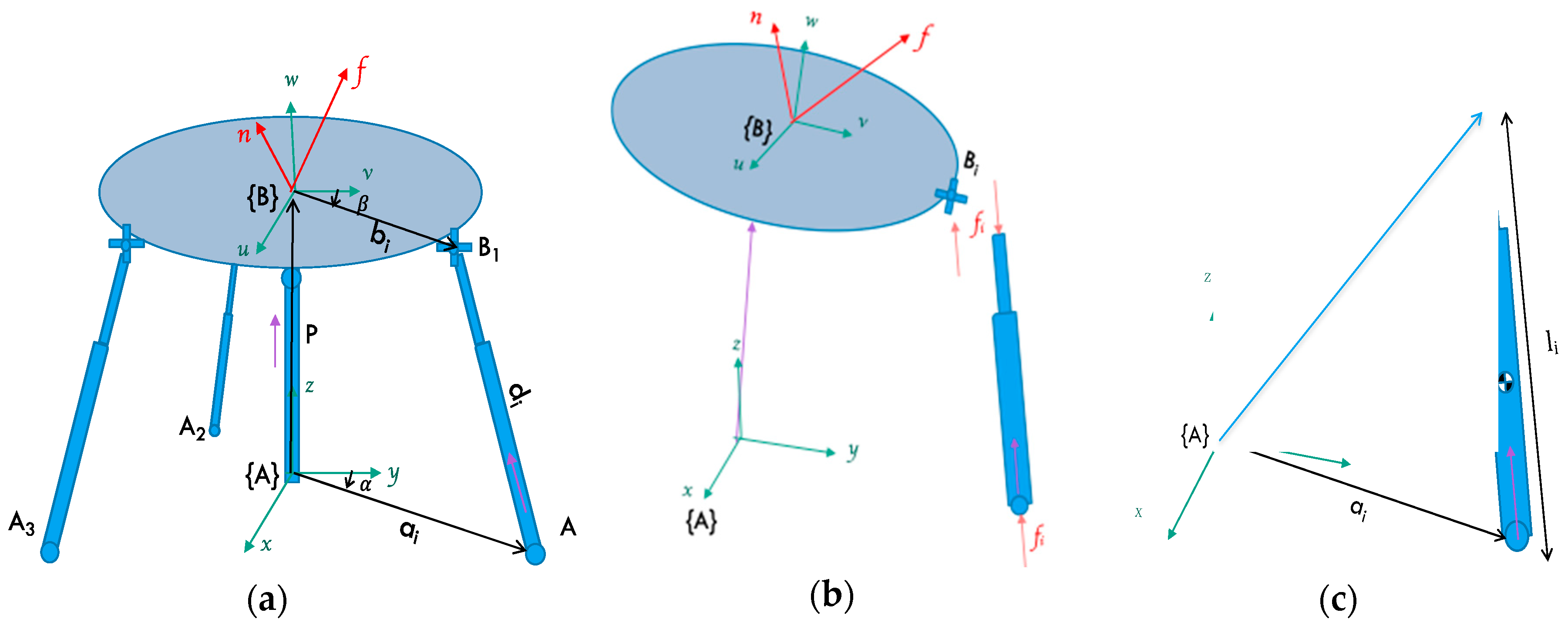
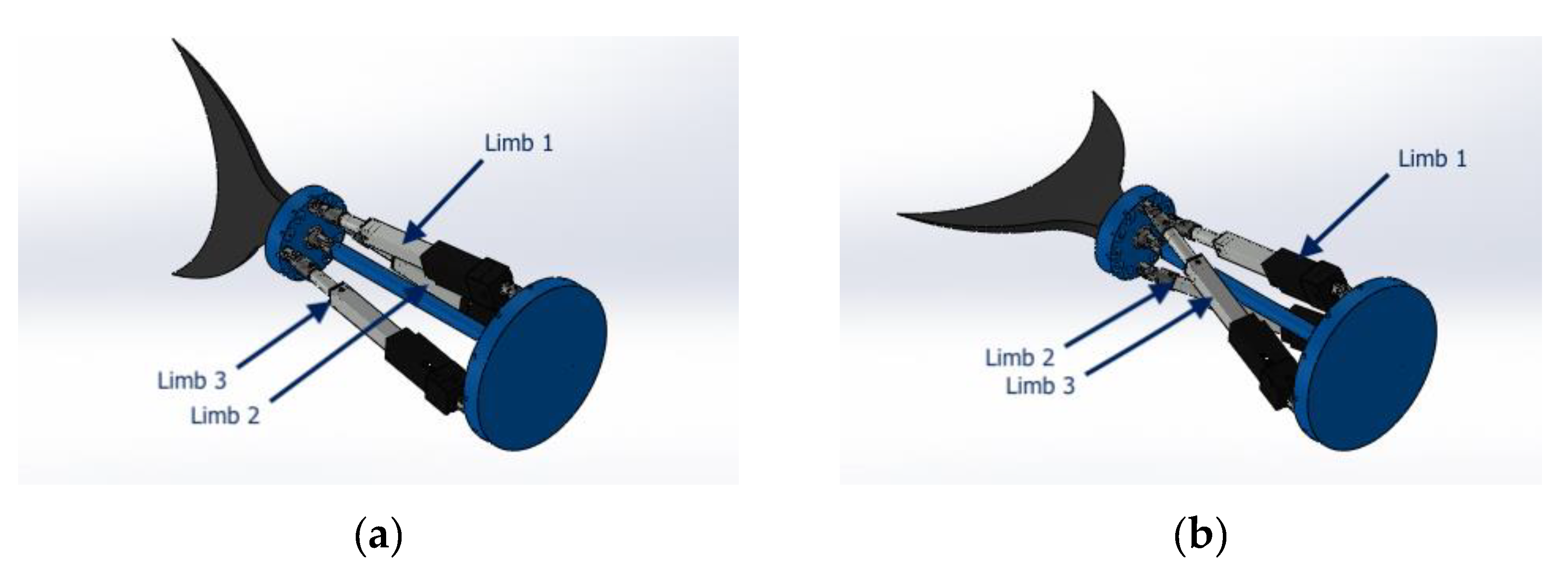
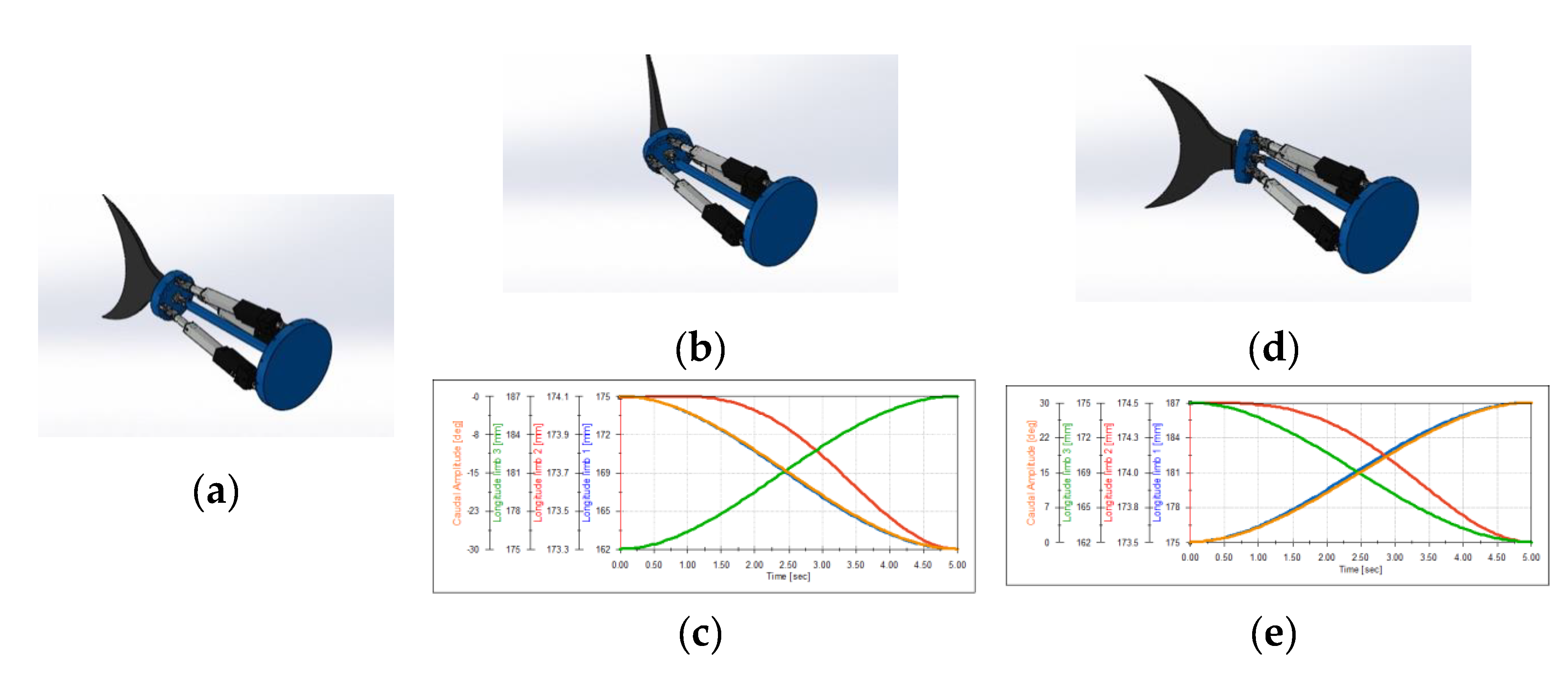
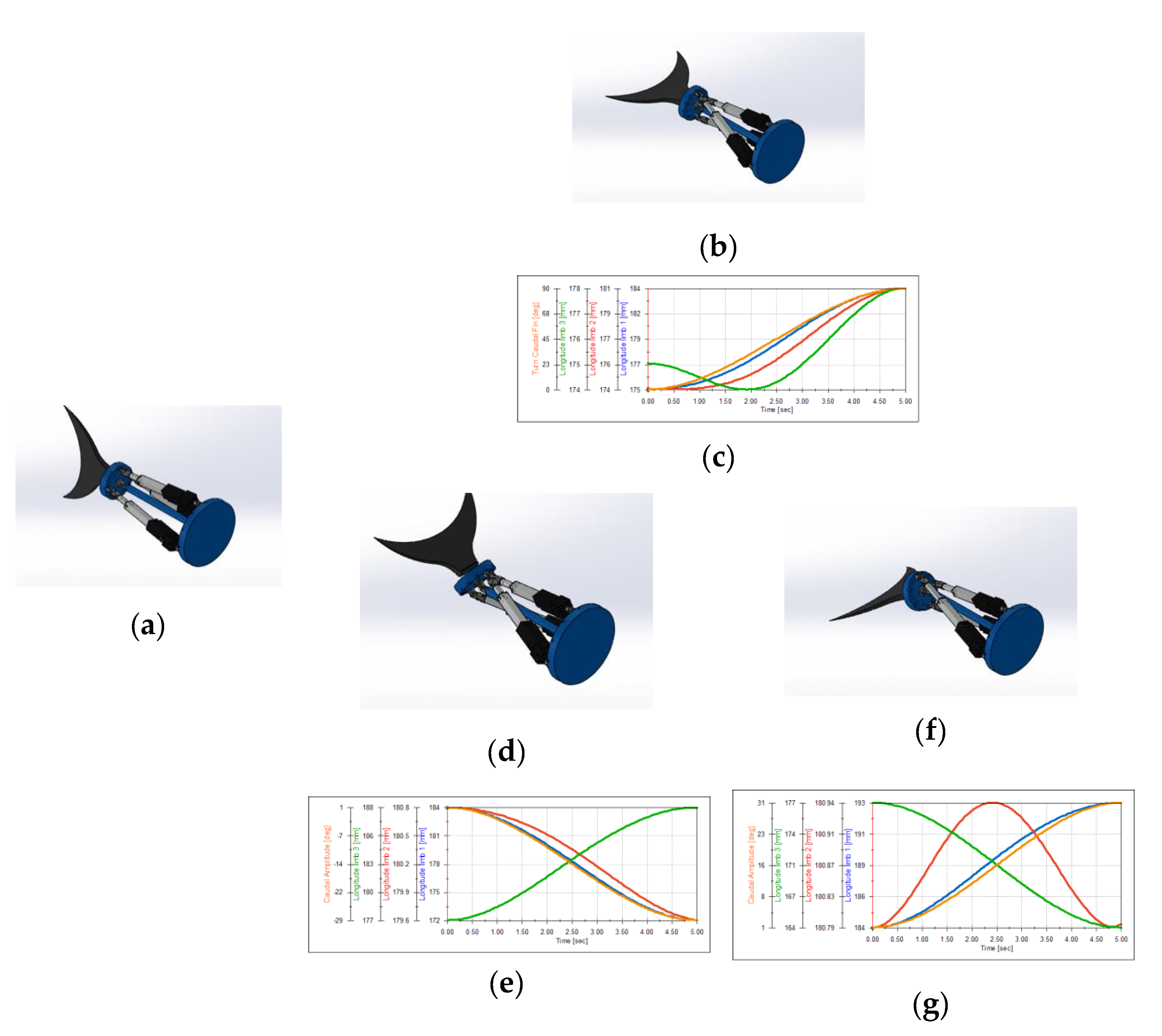


| Axis | Motion | SNAME | Position | Velocity | Force |
|---|---|---|---|---|---|
| x | translation | surge | x | u | X |
| y | translation | sway | y | v | Y |
| z | translation | heave | z | w | Z |
| x | rotation | roll | ϕ | p | K |
| y | rotation | pitch | θ | q | M |
| z | rotation | yaw | ψ | r | N |
| Parameter | Symbol | Value | Unit |
|---|---|---|---|
| Static arm longitude | 178 | mm | |
| Distance from to | a | 47 | mm |
| Distance from to | b | 25 | mm |
| Euler angles for motion | α, β, γ | −30 to +30, 0, 0 to +90 | deg |
| distribution | ψi | 0, 120, 240 | deg |
| distribution | χi | 0, 90, 270 | deg |
© 2020 by the authors. Licensee MDPI, Basel, Switzerland. This article is an open access article distributed under the terms and conditions of the Creative Commons Attribution (CC BY) license (http://creativecommons.org/licenses/by/4.0/).
Share and Cite
Aparicio-García, C.T.; Naula Duchi, E.A.; Garza-Castañón, L.E.; Vargas-Martínez, A.; Martínez-López, J.I.; Minchala-Ávila, L.I. Design, Construction, and Modeling of a BAUV with Propulsion System Based on a Parallel Mechanism for the Caudal Fin. Appl. Sci. 2020, 10, 2426. https://doi.org/10.3390/app10072426
Aparicio-García CT, Naula Duchi EA, Garza-Castañón LE, Vargas-Martínez A, Martínez-López JI, Minchala-Ávila LI. Design, Construction, and Modeling of a BAUV with Propulsion System Based on a Parallel Mechanism for the Caudal Fin. Applied Sciences. 2020; 10(7):2426. https://doi.org/10.3390/app10072426
Chicago/Turabian StyleAparicio-García, Cristina Tehaní, Edisson A. Naula Duchi, Luis E. Garza-Castañón, Adriana Vargas-Martínez, J. Israel Martínez-López, and Luis I. Minchala-Ávila. 2020. "Design, Construction, and Modeling of a BAUV with Propulsion System Based on a Parallel Mechanism for the Caudal Fin" Applied Sciences 10, no. 7: 2426. https://doi.org/10.3390/app10072426
APA StyleAparicio-García, C. T., Naula Duchi, E. A., Garza-Castañón, L. E., Vargas-Martínez, A., Martínez-López, J. I., & Minchala-Ávila, L. I. (2020). Design, Construction, and Modeling of a BAUV with Propulsion System Based on a Parallel Mechanism for the Caudal Fin. Applied Sciences, 10(7), 2426. https://doi.org/10.3390/app10072426








